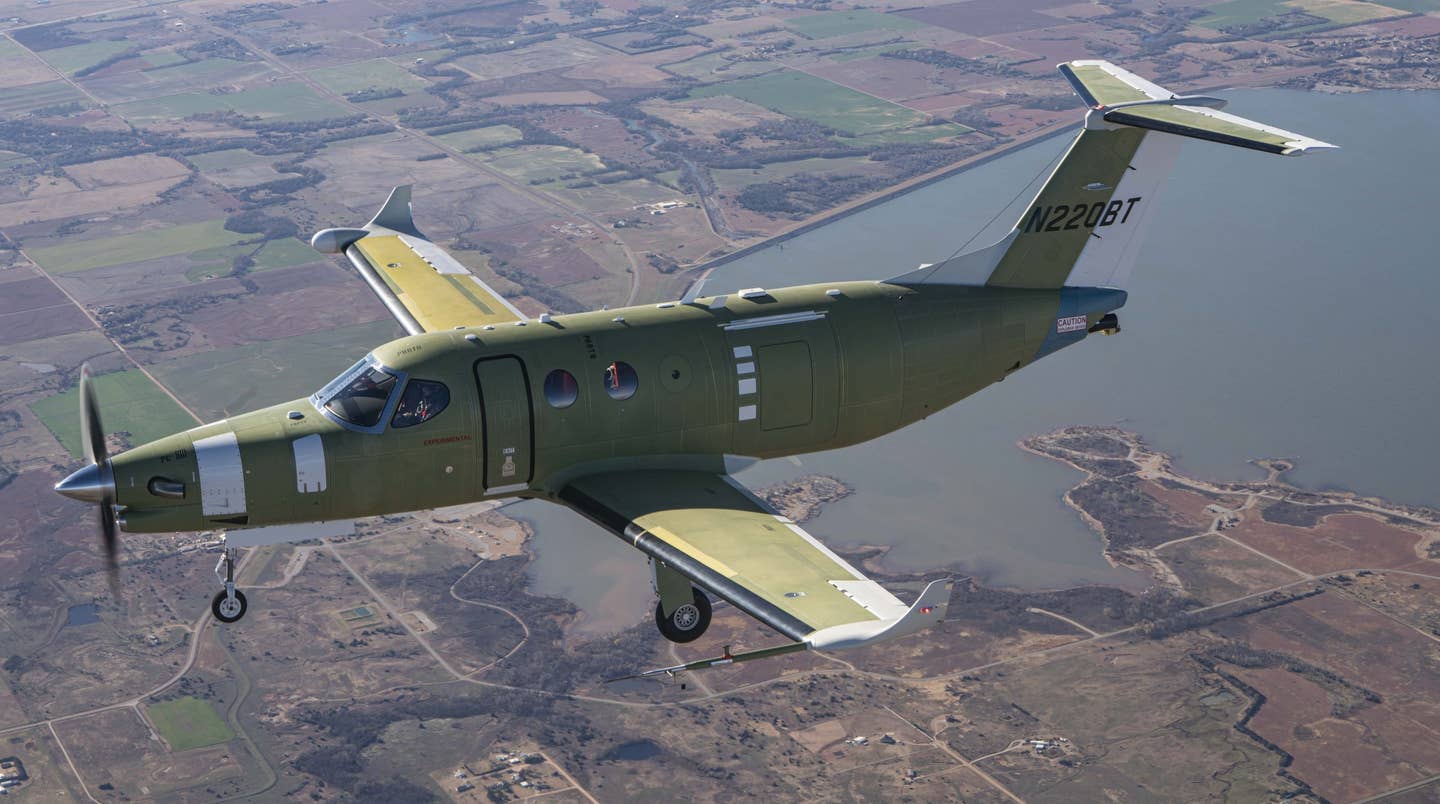Denali Takes First Flight Behind Catalyst Engine
The new turboprop brings together the Beechcraft airframe and GE Aviation powerplant for the first time in the air.

The Catalyst-powered Denali took flight over Kansas for the first time with the new turboprop engine married to the Denali airframe.
Courtesy: Textron Aviation
With senior experimental test pilot Peter Gracey and chief test pilot Dustin Smisor at the controls, the first Beechcraft Denali took to the skies in Wichita, Kansas, at 8:20 a.m. Tuesday from Textron Aviation’s west campus at Eisenhower International Airport.
The Denali flew for the first time behind the clean-sheet-design GE Aviation Catalyst turboprop powerplant.
The first flight lasted roughly 2 hours and 50 minutes, during which the test team put the airplane through its paces—working through aircraft performance, stability, and control basics, along with tests of the propulsion, environmental, flight control, and avionics systems.
"First flights really can’t go more smoothly than this.”
Peter Gracey, experimental test pilot, Textron Aviation
“From the beginning of the flight to the end, the Denali was simply flawless,” said Gracey. “It’s just a great aircraft to fly. The Catalyst engine was outstanding, and the aircraft performed to the levels we were anticipating. First flights really can’t go more smoothly than this. We are really off to an excellent start for the Denali flight test program.”
“Today’s landmark flight is not only a significant occasion for the Denali, it’s a truly great moment for our employees, our suppliers and the customers who will be flying this aircraft,” said Ron Draper, president and CEO of Textron Aviation.
“With its more environmentally friendly engine and largest cabin in its class, this is an aircraft that will change the landscape for high-performance single-engine turboprop aircraft. Today’s flight is just the beginning for what we anticipate will be a long list of important accomplishments as we prepare the aircraft for certification and customer deliveries.”
The Denali Test Fleet
The flight-test aircraft joins two more flight-test articles, with three full airframe test articles for use in ground tests.
The Catalyst engine will produce 1,300 shp as rated, with fadec powerplant controls. The combination of engine and airframe is projected to produce a turboprop with a 285-knot cruise speed and full-fuel payload of 1,100 pounds.
The five-blade, fully reversing, composite McCauley constant-speed propeller comes with ice protection.
On the flight deck, the Garmin G3000 avionics suite will incorporate a Garmin autothrottle as standard, integrating with the automatic flight control and flight management systems.

Subscribe to Our Newsletter
Get the latest FLYING stories delivered directly to your inbox






